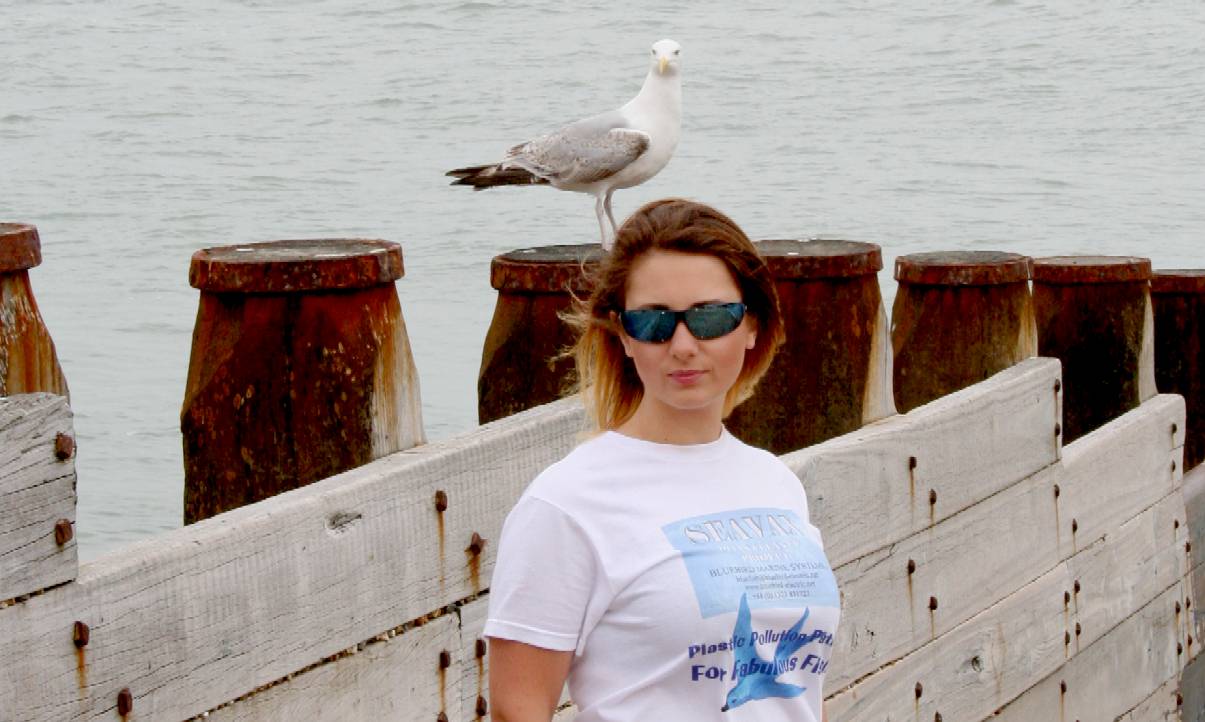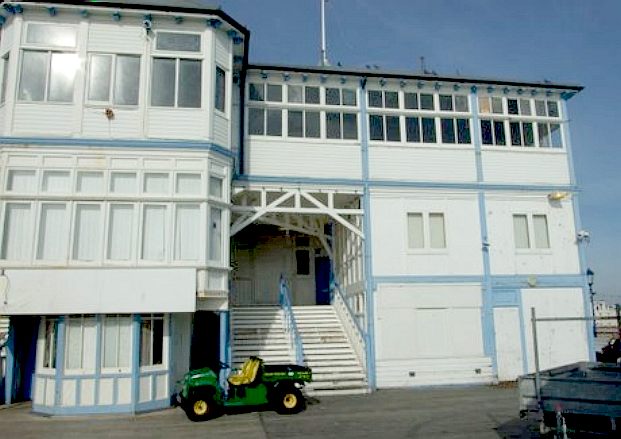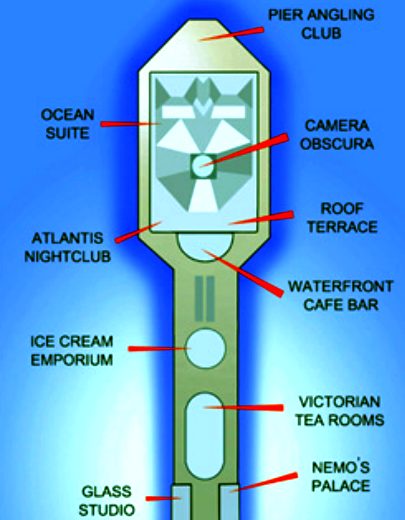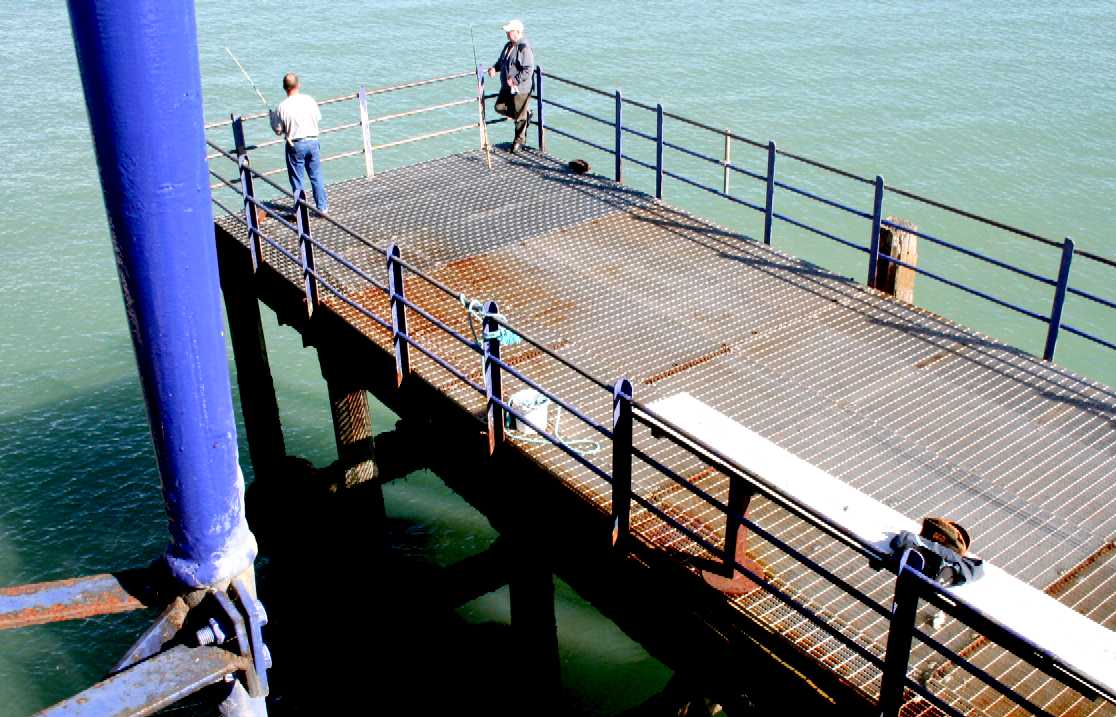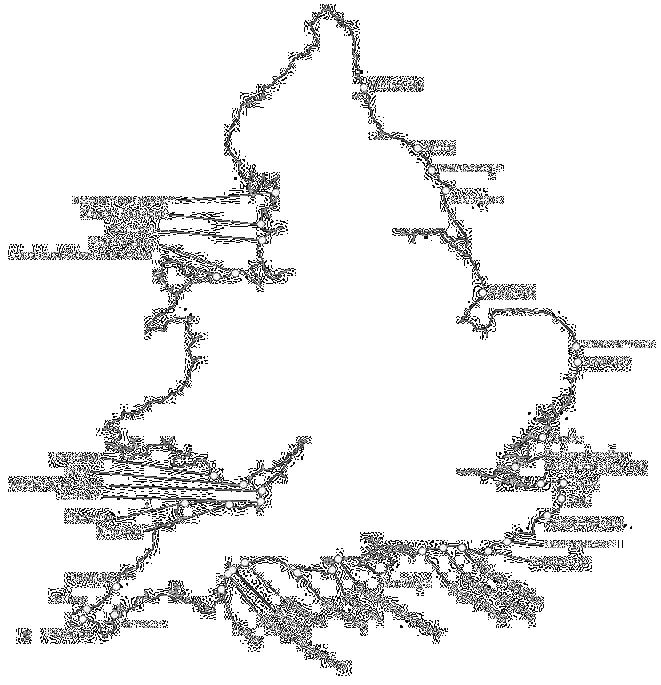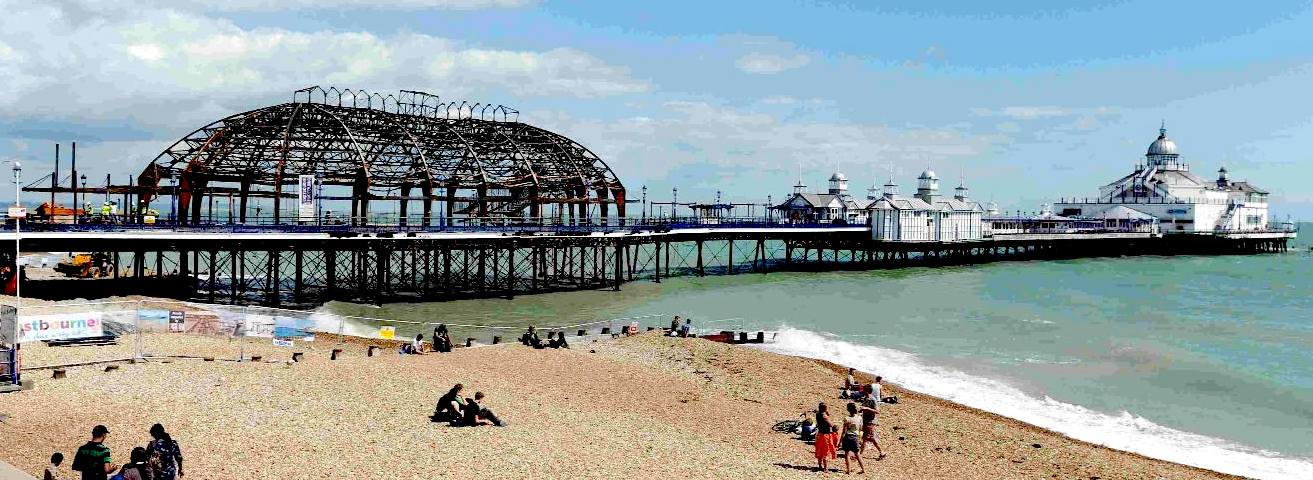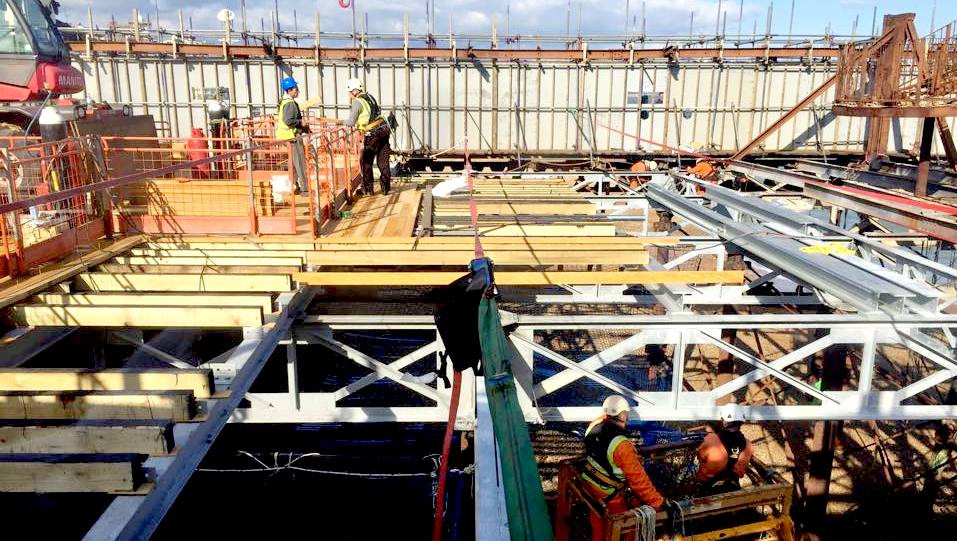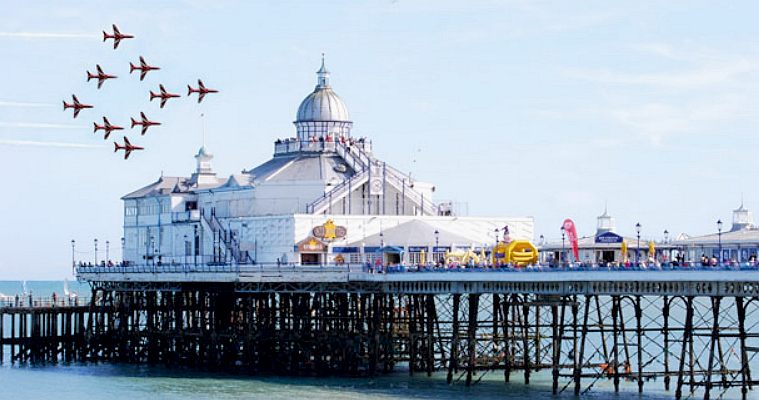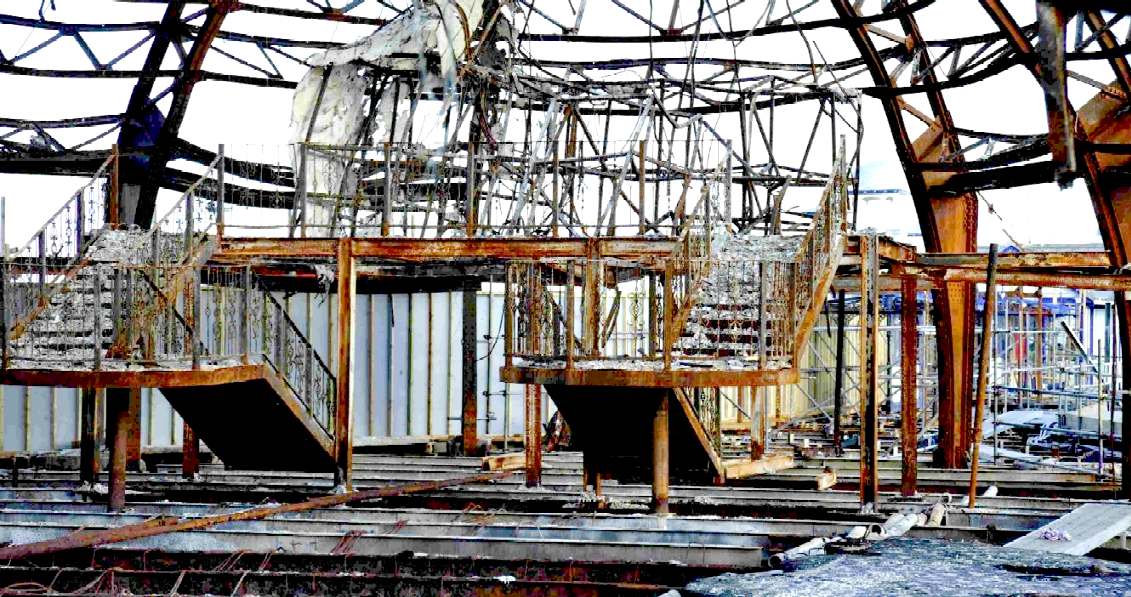|
PIER RESCUE BUSINESS PLAN
PIER PRESSURE - Monika and her seagull friend think that it's going to take something pretty amazing to pull the crowds to this difficult to reach location.
Brighton pier receives close on 3.5 million visitors a year as Little-London, but then the transport network is far superior to Eastbourne, with rail and buses arriving and departing every few minutes and with several dual carriageway roads into the heart of the city, though parking is still difficult, even with a number of high-rise car parks, public transport wins the day.
WHO CARES WINS
PIER RESCUE PROJECT COSTS - PHASE 1 - THE BLUE ROOM
At the moment we are working on ballpark project estimates. We are not at liberty to disclose the sums that will secure the rights to the pier, so fending off unsympathetic bids. We estimate that the structural steel and other subcontracted building works will come in at around £3.5 million.
During Phase 1 there will be an operation loss. Break even might be possible if a Miss Ocean event can be staged while building works are ongoing.
It is difficult to detail such proposals without the pier being on the open market, hence viewing is at present limited. We were refused access to the pertinent parts of the building recently.
PIER RESCUE PHASE 2
The second stage of development will involve the making of a marine display with attractions that are known to pull the crowds. It won't be on the scale of Disneyland, but the exhibits will stir the imagination of young and old, thrill and entertain - where at the moment there is nothing, but a little fishing going on using the redundant landing stage. The seaward theatre will be the location of these attractions.
The exhibits will be inside the buildings and so should not require additional planning (building) consents that are likely to add to the cost of this phase. Any change of use application will be relatively simple and could be agreed between the parties before making any formal application.
The original pavilion was built at the seaward end in 1888, replaced by a theatre in 1901. The theatre seated 1000, with a bar, cafe and pier office. It had cantilever balconies and a camera obscura on the roof. Shows were presented all year round. The theatre was badly damaged by fire in January of 1970, but most of the original features survive, including the balconies and pier offices. It was rebuilt as a Dixieland ShowBar. Subject to detailed examination it seems likely that the theatre could be restored and used for our attractions. The camera obscura has already been restored to use.
By this time Miss Ocean could be in its second year. Alternatively, Phase 1 could be swapped with Phase 2, when the attractions will help fund the rebuild of a Blue Room. Investors will need to sign a Non Disclosure Agreement with Cleaner Oceans to find out what the attractions are. You will be impressed.
IF NOBODY KNOWS, NOBODY CARES - This is the seaward entrance to the old theatre. Ask a local about this and they've never heard of it. Cleaner Ocean would make use of virtually all of the buildings on the pier. Where there are not attractions or conferences going on, there will be workshops and offices planning for the next season.
PIER RESCUE PHASE 3
In this phase we also want to bring back boat rides. This may involve the Alchorn boats eventually, but as they may take some time to restore, we plan to use other boats interim.
You will still be able to get a traditional cup of tea and food for the family in the existing cafés, and with comprehensive on-site security we might once again offer a decent burger and other popular foods to cater for a new influx of visitors.
BUSINESS - Existing uses of the pier at Eastbourne. What the collective turnover (income) is, is anybody's guess at the moment. The structure is rated at £100,000 for business rates.
JOB CREATION
Apart from the initial construction work, jobs will be created over and above that previously enjoyed by the town.
>> Miss Ocean will require full time events staff. This will include administration jobs, advertising, sponsorship and sports coaches.
>> Television production opportunities will be created with export potential.
>> Our exhibition will require skilled technicians and maintenance staff.
>> Conferencing will require reception and management staff.
>> Boat rides will need skippers and marine maintenance crew.
>> Security staff will feature discretely, but nevertheless creates jobs.
Properly utilized the pier will provide the town with a number of new and diverse job opportunities. At present there are jobs for catering staff and some shop keepers, including Victorian tea rooms, a glass studio, an ice cream parlor and Nemo's Palace. The venue is also used for weddings. Most of these businesses will remain, mainly to serve refreshments to parched visitors.
BUSINESS RATES
At present the pier is rated at £100,000 for business rates, BA reference: NN35830000200004. Of this sum £49,300 is actually payable to the council. This is a liability regardless of use that the owners must meet. That £49k is a cost of sales impinging on profitability, that in turn affects the ability of any operator to properly maintain this heritage asset.
A charity benefits from rate reduction on two scales. The first scale is discretionary, where a charity is not registered. In such cases a council may decide it is inappropriate to collect rates, such as where a historic asset is at stake. When a charity is registered with the Charity Commission no rates may be charged. Zero rating is then mandatory.
For this reason it makes a lot of sense for a listed building to be operated by a charity, registered or not. Where a council is not amenable to assisting a project, then registration is a must regardless of the additional administration and accounting costs incurred.
ANGLING - Very relaxing, but hardly a mainstream attraction and most certainly not about to please our accountant - more like give him an anxiety attack as to where significant income might be generated for maintenance.
YOU NEED TO PLAN AHEAD TO SUCCEED
The tables of statistics below give a snapshot guide to potential investors as to what sort of visitor numbers one might expect from a particular type of attraction. In our case we will be developing combination attractions with the aim of boosting the popularity of a site that at the moment is a 'B' list, rather than an 'A' list attraction.
Brighton pier is an 'A' list attraction to be envied with around 3,500,000 visitors per year, or 67,300 visitors per week according to official Brighton City visitor figures. Almost half of all the visitors to Brighton, pay a visit to their pier. Not so in Eastbourne, it is an also ran destination.
EASTBOURNE PIER 100,000 VISITOR EXAMPLE (approx 1,900 wk)
If we are aiming for 100,000 visitors p/a on a free entry basis, we might reasonably expect a £5 donation from (10%) 10,000 visitors = £50,000. Add food sales and charges for the Museums for 50,000 visitors @ £10 head, = £500,000, minus operational costs of sales = £200,000. Leaving £350,000 net profit to be re-invested in pier and attraction development. Charitable status boosts revenues.
250,000 VISITOR EXAMPLE (approx 4,800 wk)
25,000 visitor donations £5 = £125,000 Attraction charges and food sales 125,000 visitors @ £10 head = £1.25m
Turnover = £1,375,000 Minus cost of sales £400,000 = Net Profit £975,000
ATLANTIS NIGHT CLUB ESTIMATES
4 x nights @ 200 x £5+5 = £8,000 minus operational cost of sales £4,000 = £200,000 profit p/a. Even adjusted up to allow for higher entry fee and more alcohol sales, it is doubtful if profits will exceed £350,000 and this is taxable if not re-invested. Hence, is not attractive for the owners. There is not enough spare cash to invest in pier upkeep and satisfy shareholder dividends.
UNITED KINGDOM TOP ATTRACTIONS
BRIGHTON VISITOR NUMBERS 2004
SEASIDE TOWNS - A map of the UK showing seaside town locations.
TOP 40 SEASIDE/TOURISM JOB FIGURES 2007/8
Greater Blackpool
19,400
ESTIMATED AVE YEAR-ROUND EMPLOYMENT DIRECTLY SUPPORTED BY SEASIDE
TOURISM IN ENGLAND & WALES IN KEY SECTORS 2006-8
ASSET MANAGEMENT - Decent security might have prevented this tragedy. Let us plan ahead to prevent Eastbourne pier following in the footsteps of the fated West pier at Broghton.
SUMMARY OF OPPORTUNITIES & CHALLENGES
You may define from the above figures that Hotels and Restaurants stand to gain the most if Eastbourne pier is developed to enhance the town. This will be more so if the Miss Ocean event is staged in the town, when overnight accommodation is essential to attend the watersports competitions. Overnight accommodation is not required for day-tripper museum visits.
Summer and Winter (Christmas) coach parties will remain unaffected, save that these customers may well enjoy a boat ride in fair weather.
From
the above data and new eyes looking at the problems, it is
possible to explode important myths about the British seaside tourist
industry - and so develop an attractive business plan.
Far from being on its last legs, the British seaside tourist industry is still alive and well and handled skillfully should have a long and sustainable future in a truly circular economy.
These conclusions pose a challenge for conventional thinking and policy-making. The British seaside tourist industry has always had something of a Cinderella status, not least because of the absence of tolerably reliable statistics on its employment, output, location and trends.
Mixed in with jobs supported by local consumer spending, in sectors like retailing and catering, and with many businesses serving both local residents and visitors, it has hitherto been nigh on impossible to discern exactly what has been happening within the sector, locally or nationally. So the industry has been overlooked. or taken for granted.
The large British seaside tourist industry is deserving of policy attention – and probably support – in its own right. The industry is an important national asset. Furthermore, in so far as British seaside resorts are in competition with destinations abroad (which must to some extent be the case) an extra visitor to the British seaside rather than abroad is good for the national economy as whole.
Because air travel carries a large carbon footprint, an extra UK visitor to the British seaside is also likely to be good news for the environment, with one eye on UN and US objectives as part of a modern Agenda 21. None of this is about ‘returning to the past’.
The bucket and spade holidays of the 1950s and 60s, often the same week every year to the same place, are unlikely ever to return. The market has become more sophisticated, more fragmented, and more diverse. The changes have deeply damaged some resorts. But the changing market has also given tremendous impetus to the coastal towns of the far South West that have been opened up by rising car ownership and cheaper road travel as a result of the super minis with 60-80 mpg efficiencies.
The objective of the Cleaner Oceans Club in taking on the Eastbourne pier, it to offer interesting attractions and events in this location - while at the same time conserving local heritage.
FOSSIL FUELLED - Events such as Airbourne are climate unfriendly. It's great for spectators and crowd pulling, but flying so close to a grade II* monument with the recent crash record at such events, is hardly responsible coastal management.
RECORDING DATA FOR PROJECT DEVELOPMENT
Should we take on the pier, electronic people counters are to be installed in key locations to be able to tell year on year what visitor numbers are. The counters emit an infrared beam and each time a person breaks the beam a people movement is registered. Calibration and expansion calculations will be applied to raw counts to ensure that final figures estimate total visitor flow in and off the pier. This information is vital in forward pier developments. See the below statistics which gives a useful overview of the British economy.
ESTIMATED
ANNUAL OUTPUT (GVA) ATTRIBUTABLE TO THE SEASIDE TOURIST INDUSTRY
@ 2007 £M
CONTACTS
Eastbourne Pier Rescue Project Cleaner Oceans Club Ltd Solar Studios BN27 1RF United Kingdom
Contacts: Hayley Stebbings (events manager) Lloyd Stebbings (boating) Terry Valeriano (events security) Natasha Lee (sports coach) Christina Dusart (events admin)
Tel: +44 (0) 1323 831727 Email: pageant@miss-ocean.com
LINKS
Big Lottery Fund Coastal Communities Fund https://www.biglotteryfund.org.uk/ccf http://www.eastbourne.gov.uk/ http://www.hlf.org.uk/ http://www.historicengland.org.uk/ southeast@HistoricEngland.org.uk
|
|||||||||||||||||||||||||||||||||||||||||||||||||||||||||||||||||||||||||||||||||||||||||||||||||||||||||||||||||||||||||||||||||||||||||||||||||||||||||||||||||||||||||||||||||||||||||||||||||||||||||||||||||||||||||||||||||||||||||||||||||||||||||||||||||||||||||||||||||||||||||||||||||||||||||||||||||||||||||||||||||||||||||||||||||||||||||||||||||||||||||||||||||||||||||||||||||||||||||||||||||||||||||||||||||||||||||||||||||||||||||||||||||||||||||||||||||||||||||||||||||||||||||||||||||||||||||||||||||||||||||||||||||||||||||||||||||||||||||||||||||||||||||||||||||||||||||||||||||||||||||||||||||||||||||||||||||||||||||||||||||||||||
|
This webpage is copyright © Cleaner Oceans Club Ltd (Company No: 4674774) September 2015, Solar Studios, BN271RF, United Kingdom. The name Miss Ocean™ is a trademark of the Cleaner Oceans Club™.
|
